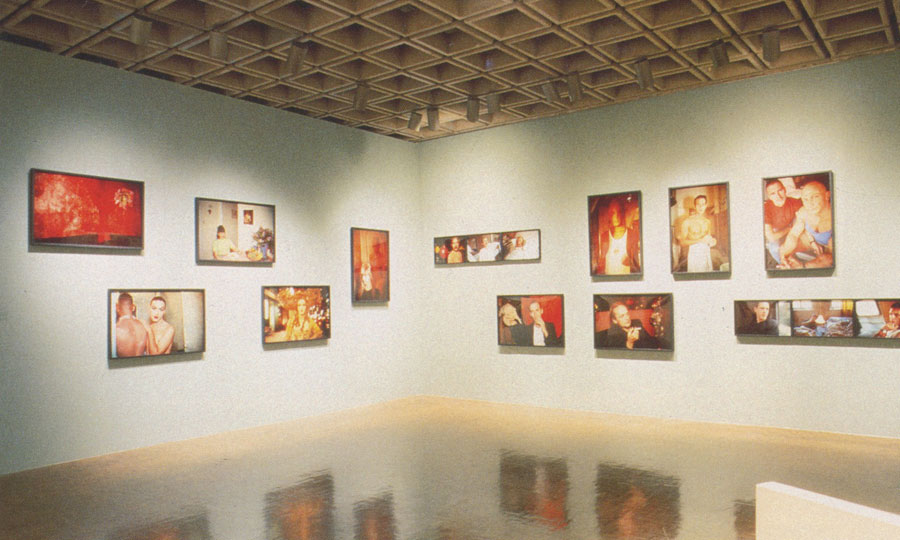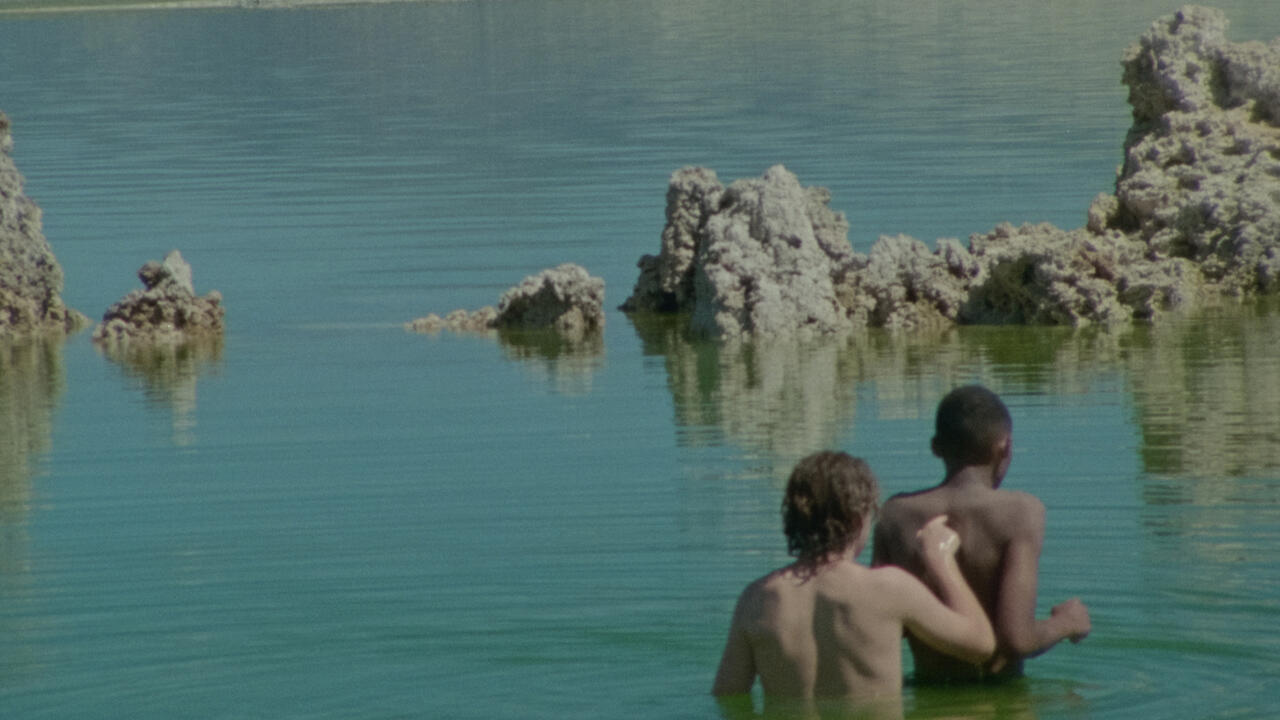Best in Show: 1991–95
The first in a new five part series: the frieze editors select the most significant shows from the past 25 years
The first in a new five part series: the frieze editors select the most significant shows from the past 25 years







frieze magazine celebrates its 25th birthday this year and to mark the occasion we are looking back at the best exhibitions over that period.
Perhaps it took us too long to admit that selecting the ‘best’ exhibitions from the past 25 years is an impossible task. Even if we ignore the fact that, since its inception in 1991, frieze has reviewed upwards of 6,000 shows over 181 issues, pulling in the opinions of writers from almost every corner of the globe, we find ourselves asking: what determines the ‘best’ anyway? Originality? Curatorial ingenuity? Artistic brilliance? The ambition of the small or the pull of the large? Those shows commemorating the forgotten greats? Those showcasing the stars of the future? There are too many variables, and there’s too little time.
What we have ended up with is ‘Best in Show’: a series of five lists, each covering a five-year period. (We will post one per week over the next five weeks.) These lists, with links to the original reviews for those covered in frieze, present a (frankly microscopic) overview of what are, in our opinion, the most significant exhibitions from the last quarter century. Shows that, in some way, have made an indelible impact on contemporary art – a field as ever-changing as it is wonderfully indefinable. There will inevitably be omissions (the fact that the frieze offices are split between London, New York, and Berlin, will see to that), but if nothing else, this is a testament to the continued dedication to innovative exhibition making that has fascinated us for 25 years and counting.
Mike Kelley, ‘Catholic Taste’, 1993 (Whitney Museum of American Art, New York; LACMA, LA; Moderna Museet, Stockholm; Haus der Kunst, Munich)
David Rimanelli: ‘No longer do we live in a period in which we can confidently predicate the radicality of form as a necessary concomitant of radical content, the cri de coeur of both the forthrightly agitprop and ironically subversive historical avant-gardes. Distrusting agitprop no less than idealistic formalism, Kelley has frequent recourse to debased vernacular expression, like that of comics. (Here is my opportunity to rehash the high-low dichotomy, but I don't feel like it. Remember, I'm super-lazy.)’
'Out of Actions: Between Performance and the Object, 1949-1979', 1993, curated by Paul Schimmel (MoCA, LA)
Frazer Ward: 'I saw a Hermann Nitsch CD in a music store the other day, and I wasn't particularly surprised. In the last two or three years, in the US at least, there has been a lot of interest in performance art. There have been books (and more are coming), issues of journals, academic conferences and exhibitions of older works - or their documentation - especially from the 60s and 70s. Elements of performance and its companion, video, have appeared in works by high-profile, younger contemporary artists (Janine Antoni, Matthew Barney, Gillian Wearing etc.). Now, to top it all off, there is the enormous, impressive exhibition at Los Angeles' MoCA, 'Out of Actions: Between Performance and the Object, 1949-1979'.'
Project Unité, 1993, curated by Christian Philipp Müller and Yves Aupetitallot (Unité d’Habitation, Firminy)
James Roberts: ‘Turn right at the drug rehabilitation centre, left at the unfinished church and go straight past the empty concrete sports stadium and you arrive at Le Corbusier's Unité d'Habitation in the small, post-industrial French town of Firminy. Situated on a hillside overlooking the town, the Unité is one of five such Le Corbusier projects in France and comprises the apartment building itself, the non-church, sports stadium and a youth club. Symptomatic of most utopian housing projects, the North Wing of the apartment block was condemned and evacuated in 1983,since when it has remained unoccupied and shut off from the outside world.’
Whitney Biennial, 1993, curated by Elizabeth Sussman, Lisa Phillips, John G. Hanhardt and Thelma Golden (Whitney Museum of American Art, New York)
Laura Cottingham: ‘The reception of the 1993 Whitney Biennial, the so-called politically correct or multicultural biennial has been characterized by a consistent and familiar refrain. Although sung in different keys, around sometimes divergent stanzas, the negative chorus goes something like this: “There's no beauty!”, “There's no pleasure!”, “Where's the painting?”’
‘Minky Manky’, 1995, curated by Carl Freedman (South London Gallery, London)
James Roberts: 'Freedman was co-organizer of a series of exhibitions at London's Building One - 'Modern Medicine', 'Gambler' and 'Market' - that showcased the work of Hirst and his contemporaries of the 'Freeze' generation. That was five years ago and inevitably 'Minky Manky' will be seen as a five-years-on cum where-are they-now? statement. In this sense, the show is as much about who is included as what they are represented by. What is made startlingly clear is how far the debate has moved on and its references shifted in such a short time; how so much work from the recent past - and present - can seem so thoroughly... institutionalised. The most revealing quality of 'Minky Manky' is seeing who can accept growing older and still retain an element of surprise and engagement with their work.'
Other notable exhibitions:
Jeff Koons, 'Made in Heaven', 1991 (Sonnabend Gallery, New York and Galerie Max Hetzler, Paris); ‘Helter Skelter: LA Art in the 1990s’, 1992, curated by Paul Schimmel (MoCA, LA); 1st Asia Pacific Triennial of Contemporary Art, 1993, curated by Caroline Turner (Brisbane, Australia); Marina Abramović, 1993 (Neue Nationalgalerie, Berlin); Sonsbeek, 1993, curated by Valerie Smith (Arnhem, Belgium); ‘Chris Marker: a Video Selection’, 1994 (MoMA, New York); 'inSite '94', 1994, curated by Lynda Forsha (various venues, Tijuana, Mexico; San Diego, USA); ‘Take Me (I’m Yours)’, 1995, curated by Hans Ulrich Obrist, (Serpentine Gallery, London)























